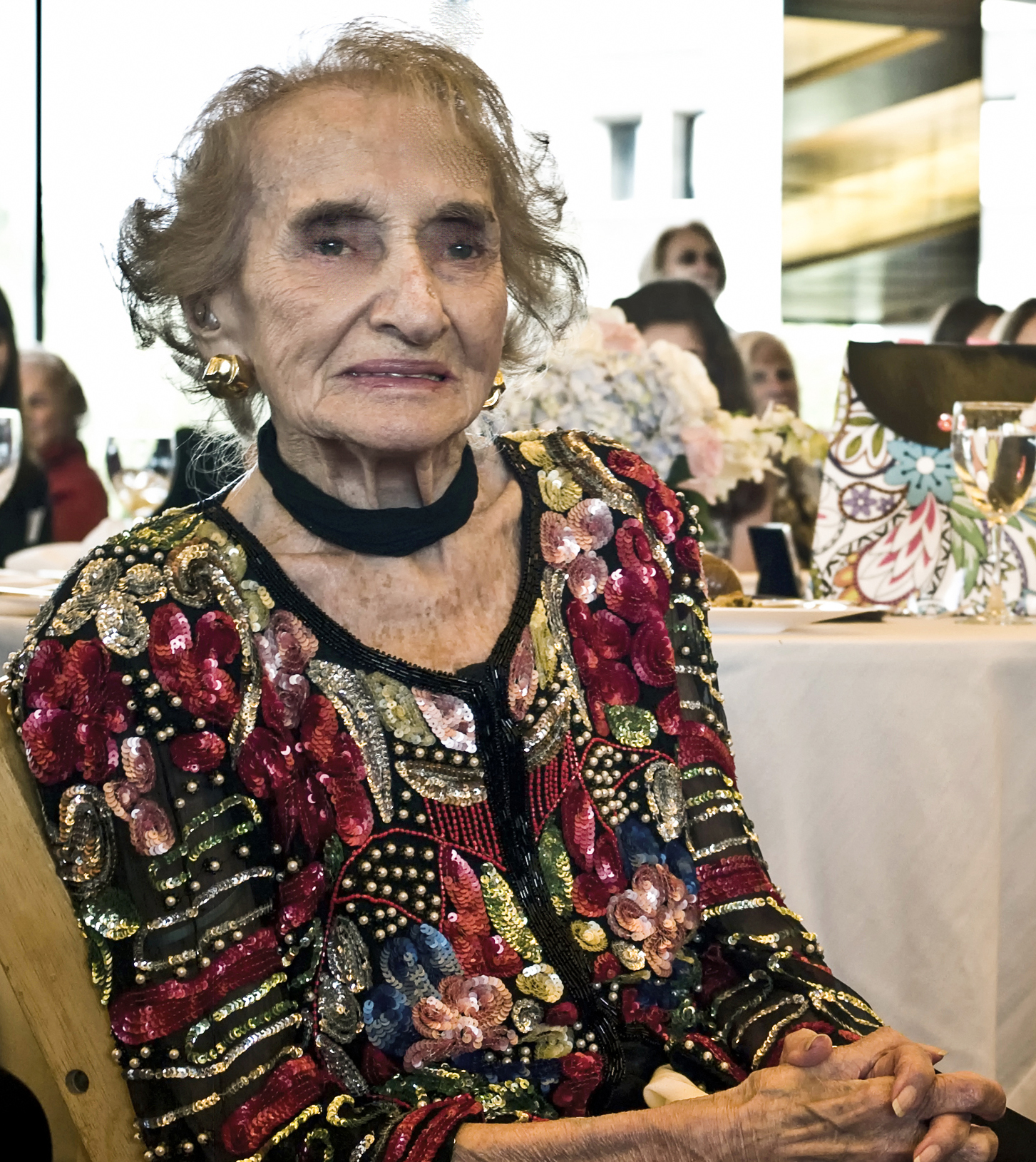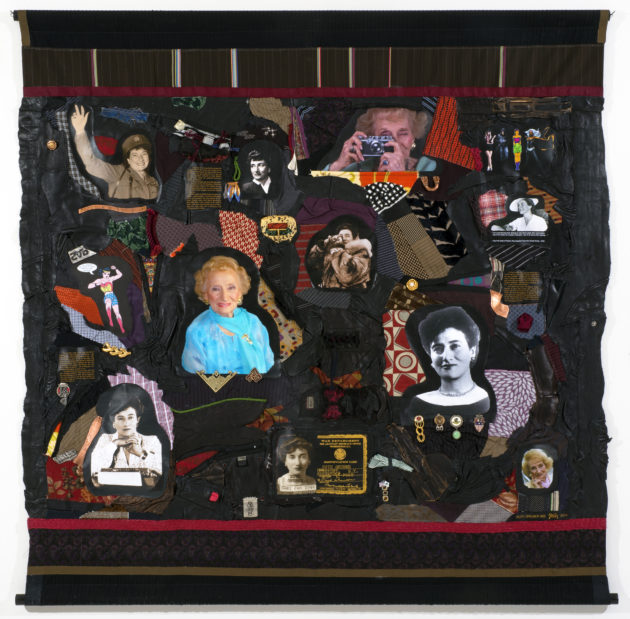
Ruth Gruber – Unstoppable to 105
Her son, David Michaels, an Obama assistant secretary of labor for occupational safety and health, affectionately described his mother as “born in a shtetl called Brooklyn” and “tough as nails.” Living proof: “Seven years ago, when she broke her neck, she recovered without surgery.” Gruber’s daughter, Celia Michaels, a former CBS News editor, described how she had accompanied her mother to this year’s election. Back in 1952, since Celia was born on Election Day, Gruber couldn’t vote, and Eisenhower won.
Michael Hearne of The Annotated Huckleberry Finn revealed that Ruth Gruber’s real name was Rosalind. On the first day of kindergarten she announced, “My name is Ruth.” In Hearne’s words, “What an incredible will!”
It helped that she was brilliant. At 20, Ruth Gruber became the world’s youngest PhD, with a doctorate in German philosophy and English literature from the University of Cologne. Perhaps the hint of a role model, her thesis on Virginia Woolf is now seen as the first feminist critique of Woolf. Seven decades later, Gruber published Virginia Woolf: The Will To Create As a Woman.
In Germany, in 1932, she witnessed early Nazi demonstrations and saw the future Fuhrer in action.
Gruber was a self-taught photographer, journalist and inspiring public speaker. Her son remembers her practicing her phrases on the family. She did ask the advice of one of the 20th century’s great photographers, Edward Steichen, who told her, “Ruth, take pictures with your heart.” And she did – going from on-assignment adventure to witnessing history and advocating for Jewish refugees.
She was the first foreign correspondent allowed into the Soviet Arctic and Siberia, photographing Stalin’s gulag. She then visited family in Poland, none of whom survived Hitler.

Tapestry by Linda Stein from her series “Holocaust Heroes: Fierce Females”
She was tiny and she was tough. The iconic photo of Gruber in Alaska during World War II, wrapped in fur, camera to eye, gives no hint of what she faced as a single woman in a hostile environment. She was a special assistant to FDR’s Secretary of the Interior, Harold Ickes, who became her mentor and close friend. The Alaska Dispatch News quoted Ickes’ diary, describing Gruber as “an imperious young woman who does not stand on ceremony,” perfect for the Alaska assignment. She reported back to him on the territory as a possible location for G.I. postwar homesteading.
In 1944, Ickes sent her on a secret mission to Europe to escort nearly 1,000 refugees from Nazi-occupied countries across a U-boat-infested Atlantic Ocean. The “guests” of President Roosevelt were interned behind barbed wire at a decommissioned army training base in Oswego, N.Y. The only Jews given wartime safe haven by the Roosevelt government, these refugees were ultimately allowed to remain in the U.S. thanks to Gruber’s efforts. Gruber remained the advocate for these homeless Jews and non-Jews, her “Oswego family.” Forty years after the rescue, the book, Haven: The Dramatic Story of 1,000 World War II Refugees and How They Came to America.
Inspiring in this current period of post-election anxiety, Gruber was unstoppable, fearless.
With the luck of being a photojournalist in the right place at the right time, Gruber was on assignment in Jerusalem in 1947, when the British attacked the ship Exodus 1947 as it attempted to run the British Mandate blockade and land in Haifa with 4,500 Jewish survivors of Hitler. Gruber rushed to the scene, then flew to Cyprus to meet up with the prison ships. She was the only journalist the British allowed to accompany the refugees back to Germany, after the British turned them away from the shores of pre-State Israel. Her on-board photos of the caged Holocaust survivors defiantly flying the British flag with a hand-painted swastika went global, shaming the British government and hastening the establishment of the State of Israel.
Within a year her book was out, Destination Palestine: The Story of the Haganah Ship Exodus 1947. Leon Uris’s novel Exodus came 10 years later, followed by Otto Preminger’s film adaptation.
Gruber went from journalist to passionate advocate, authoring 19 books, many based on her experience. She covered the Nuremberg Trials and Israel from its birth.
Unlike the current faux news, her photojournalism documented with total accuracy the assault on human decency – pictures of prisoners in the Soviet gulag, of Jewish refugees, and in 1985, at the age of 74, pictures documenting Ethiopian Jews leaving remote villages on their arduous path to Israel.
Some of her book titles sound surprisingly egotistical — a publisher’s decision? — I Went to the Soviet Arctic (1939), I Went To The Soviet Union (1944), Ahead of Time: My Early Years As a Foreign Correspondent (1991, 2001), and her last book, Witness: One of the Great Correspondents of the Twentieth Century Tells Her Story (2007).
The funeral testimonials by friends and family speak otherwise. Ruth Gruber emerges as unconditionally supportive. In the words of one of the young Oswego refugees to whom Gruber became friend and mentor, “Ruth always made me find the best part of myself.” The former refugee and two other Gruber friends went on to produce the documentary of Gruber’s life, “Ahead of Time.” At 99, Gruber made sure it wasn’t a fluff piece. The essence of Gruber’s message: We each have our own tools to fight injustice. Hers were her camera and her typewriter. Look inside yourself and see what you can do to make it a better world.
Perhaps her role model came from within.
The views and opinions expressed in this article are the author’s own and do not necessarily reflect those of Lilith Magazine.
One comment on “Ruth Gruber – Unstoppable to 105”
Comments are closed.




Thank you for this inspirational piece. What a woman! What a mentor to us all.